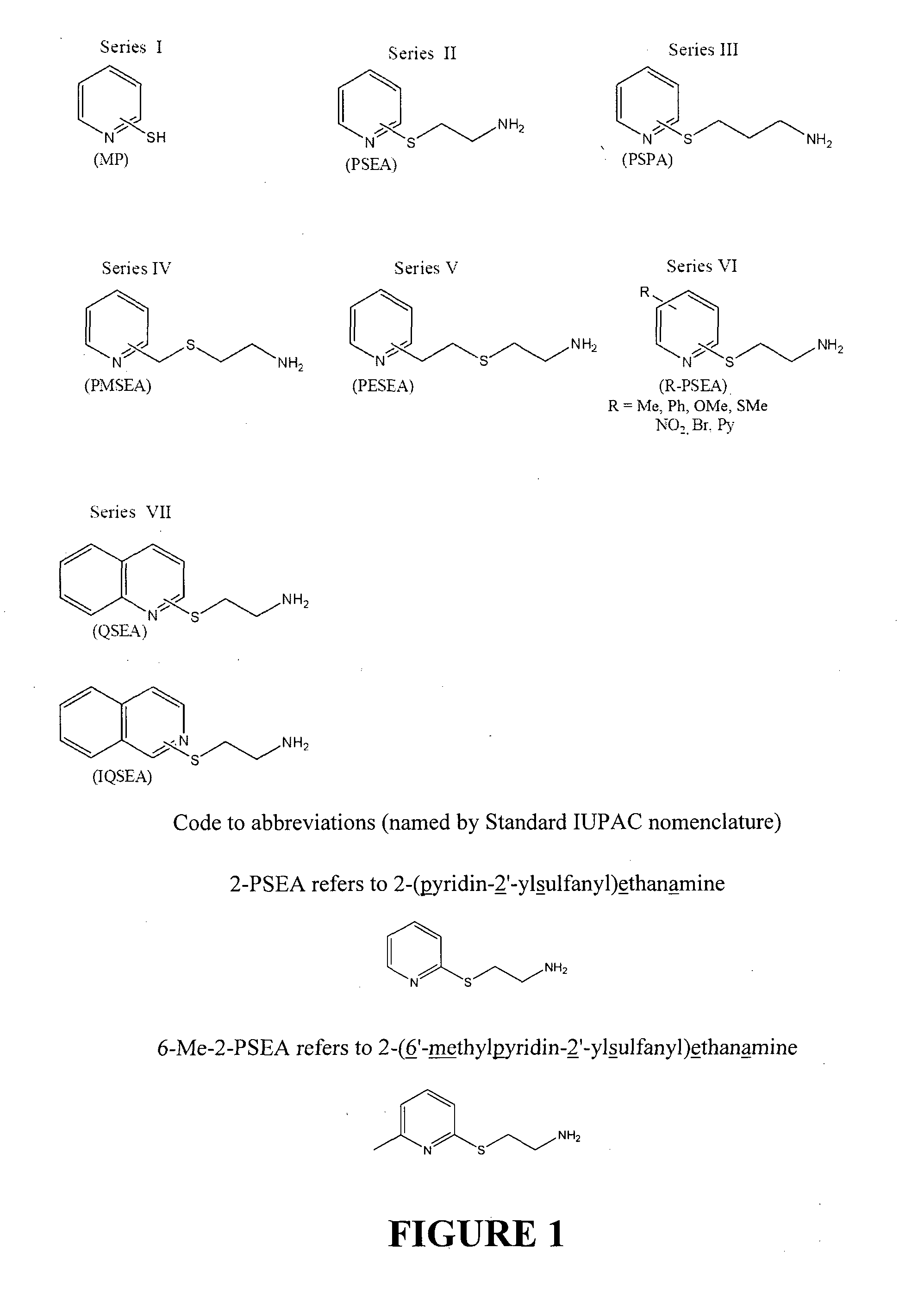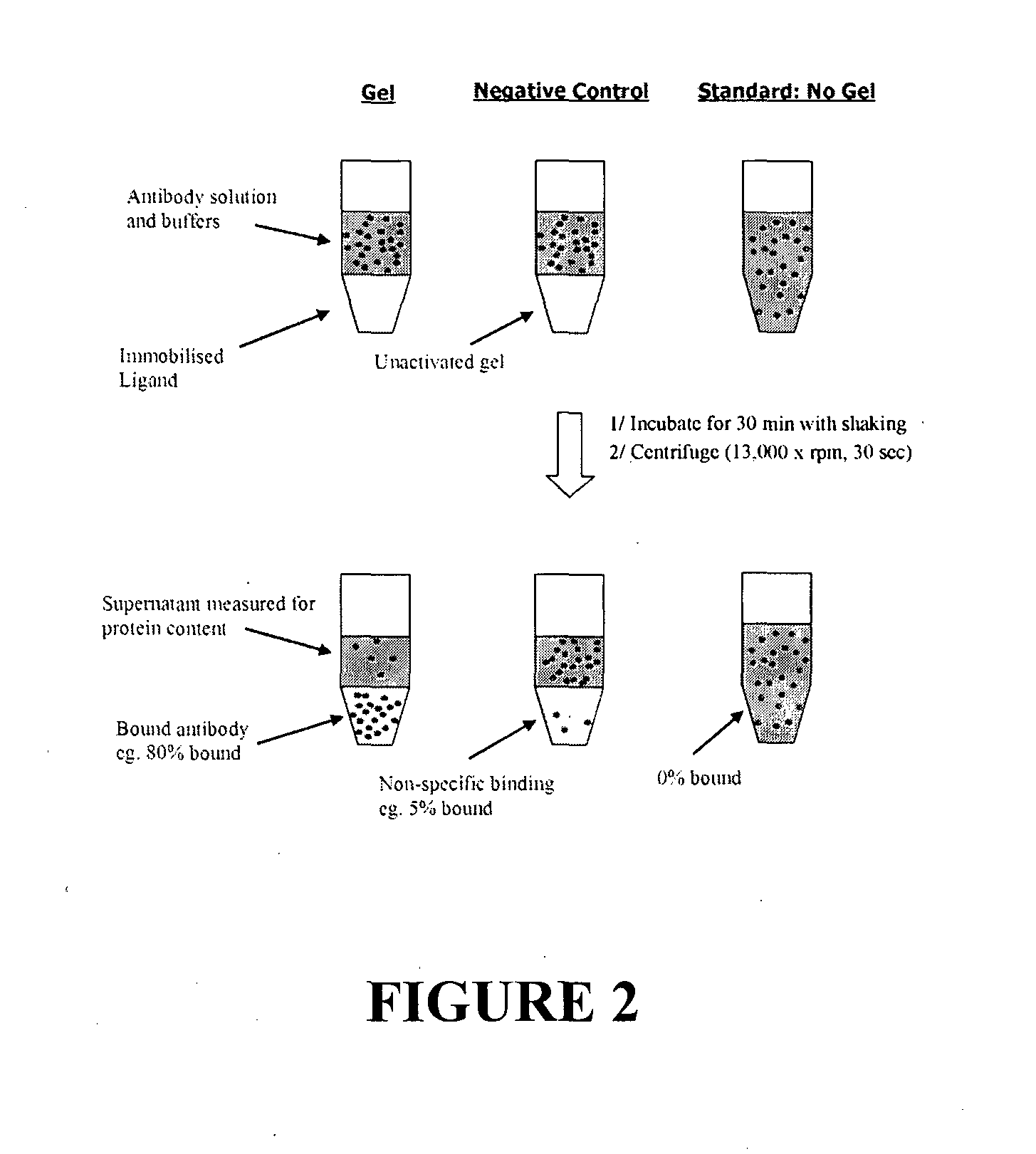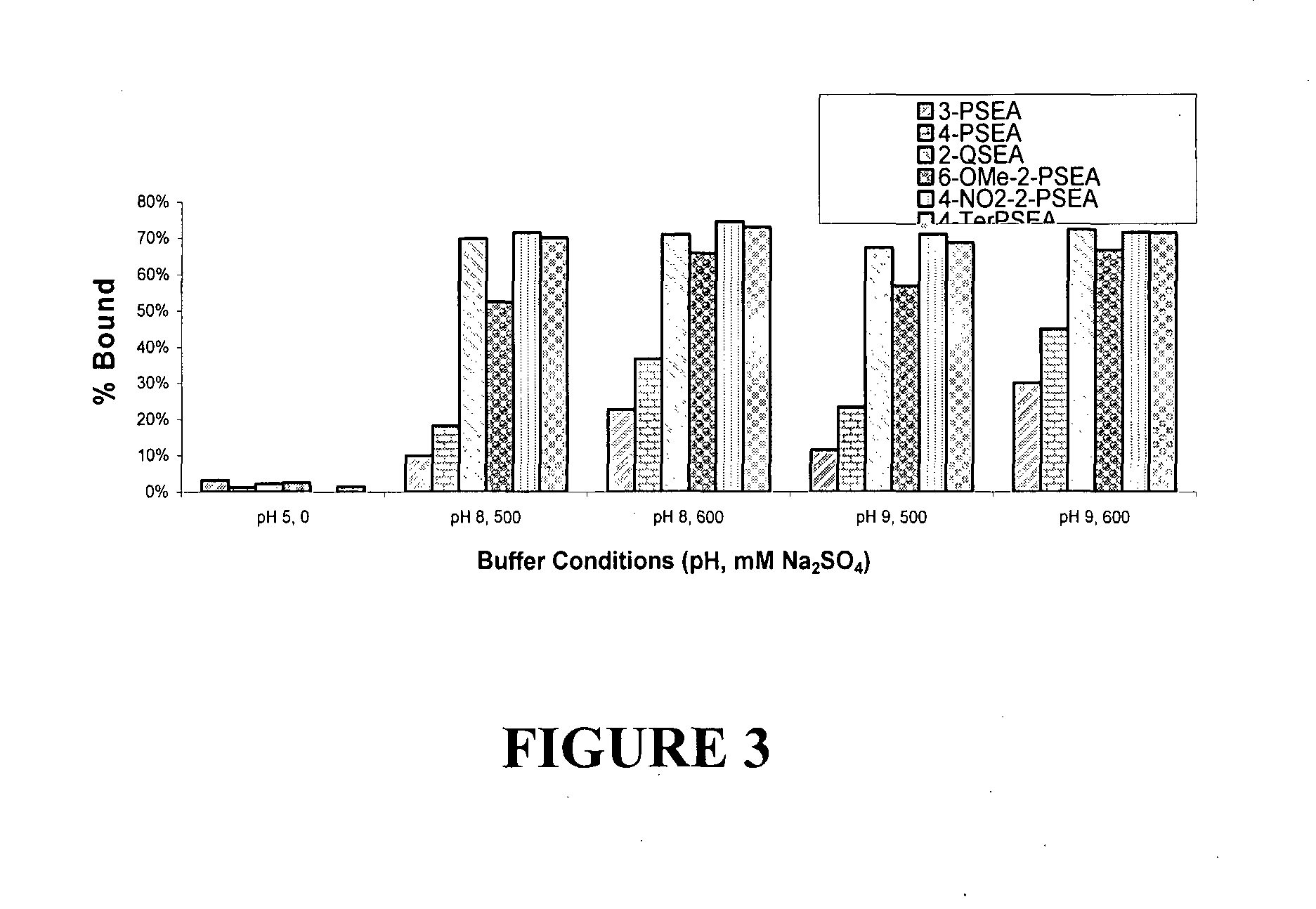Affinity ligands and methods for protein purification
a technology of affinity ligands and ligands, applied in the field of affinity ligands and chemical affinity ligand matrix conjugates, can solve the problems of global shortfall of available biomanufacturing capacity, complex use of generic purification systems, and inability to achieve all of these features
- Summary
- Abstract
- Description
- Claims
- Application Information
AI Technical Summary
Problems solved by technology
Method used
Image
Examples
examples
Experimental
(i) Synthetic Procedures for the Affinity Ligands
1. General
[0286]Melting points were determined using a Gallenkamp or a Buchi B-545 melting point apparatus with a digital thermometer and are uncorrected. Boiling points as quoted for distillations using Kugelrohr apparatus refer to oven temperatures and serve only as a guide to boiling points.
[0287]Infrared spectra were recorded on a Bruker Equinox 55 or a Perkin Elmer 1600 series Fourier Transform infrared spectrometer as paraffin (Nujol) mulls of solids between sodium chloride plates, KBr disks of solids or thin films of liquid (neat) between sodium chloride plates. The infrared data were recorded in wavenumbers (cm−1) with the intensity of the absorption (νmax) specified as either s (strong), m (medium), w (weak) and prefixed b (broad) where appropriate.
[0288]Proton nuclear magnetic resonance (1H n.m.r.) spectra were recorded at 200 MHz on a Bruker AC-200 spectrometer, 300 MHz with a Bruker DPX-300 spectrometer or at 4...
PUM
| Property | Measurement | Unit |
|---|---|---|
| dissociation constants | aaaaa | aaaaa |
| pH | aaaaa | aaaaa |
| pH | aaaaa | aaaaa |
Abstract
Description
Claims
Application Information
 Login to View More
Login to View More - R&D
- Intellectual Property
- Life Sciences
- Materials
- Tech Scout
- Unparalleled Data Quality
- Higher Quality Content
- 60% Fewer Hallucinations
Browse by: Latest US Patents, China's latest patents, Technical Efficacy Thesaurus, Application Domain, Technology Topic, Popular Technical Reports.
© 2025 PatSnap. All rights reserved.Legal|Privacy policy|Modern Slavery Act Transparency Statement|Sitemap|About US| Contact US: help@patsnap.com



